Toy State 94155R49 VAPORIZR 2 User Manual FAR 94155 Vaporizr2 ENG IM
Toy State International Ltd. VAPORIZR 2 FAR 94155 Vaporizr2 ENG IM
User Manual
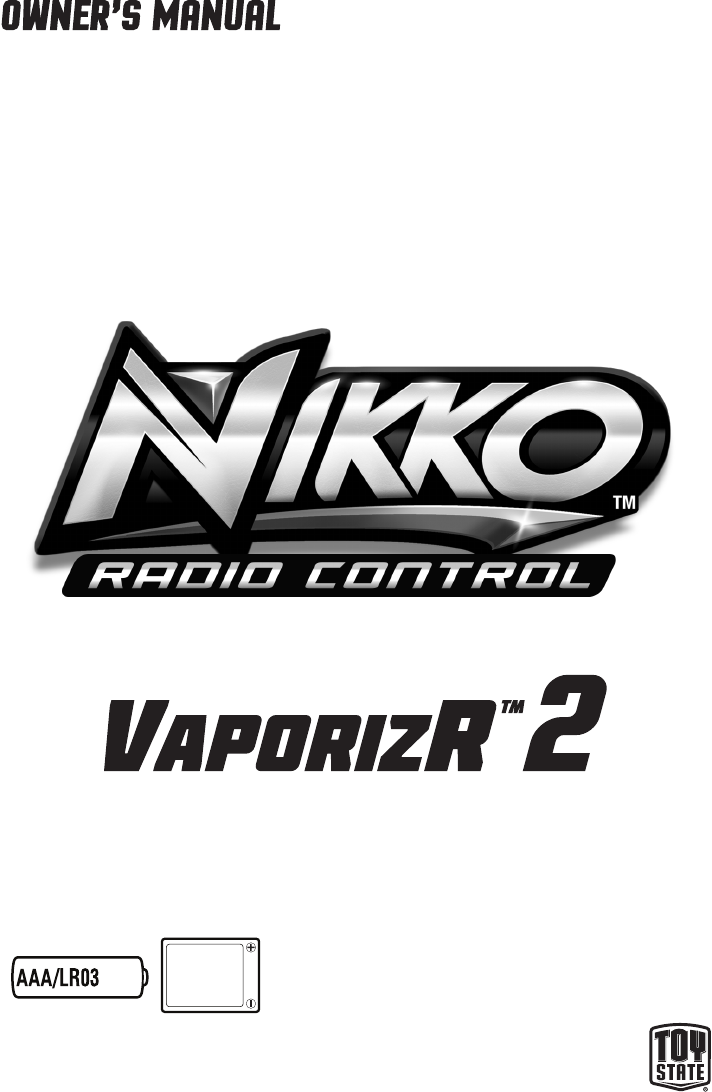
x3 8+
#94155
CONTROLLER
VEHICLE
Important! Carefully read the Owners Manual before play!
BATTERIES INCLUDED
BATTERY INCLUDED
CAUTION-ELECTRICALLY OPERATED PRODUCT:
OBSERVED DURING HANDLING AND USE TO PREVENT ELECTRIC SHOCK,INPUT:120V AC 60Hz 300mA,OUTPUT: 7.5V DC 1000mA.
NOT RECOMMENDED FOR CHILDREN UNDER 8 YEARS OF AGE, AS WITH ALL ELECTRIC PRODUCTS, PRECAUTIONS SHOULD BE
RECHARGABLE
6.0V Ni-MH
x1
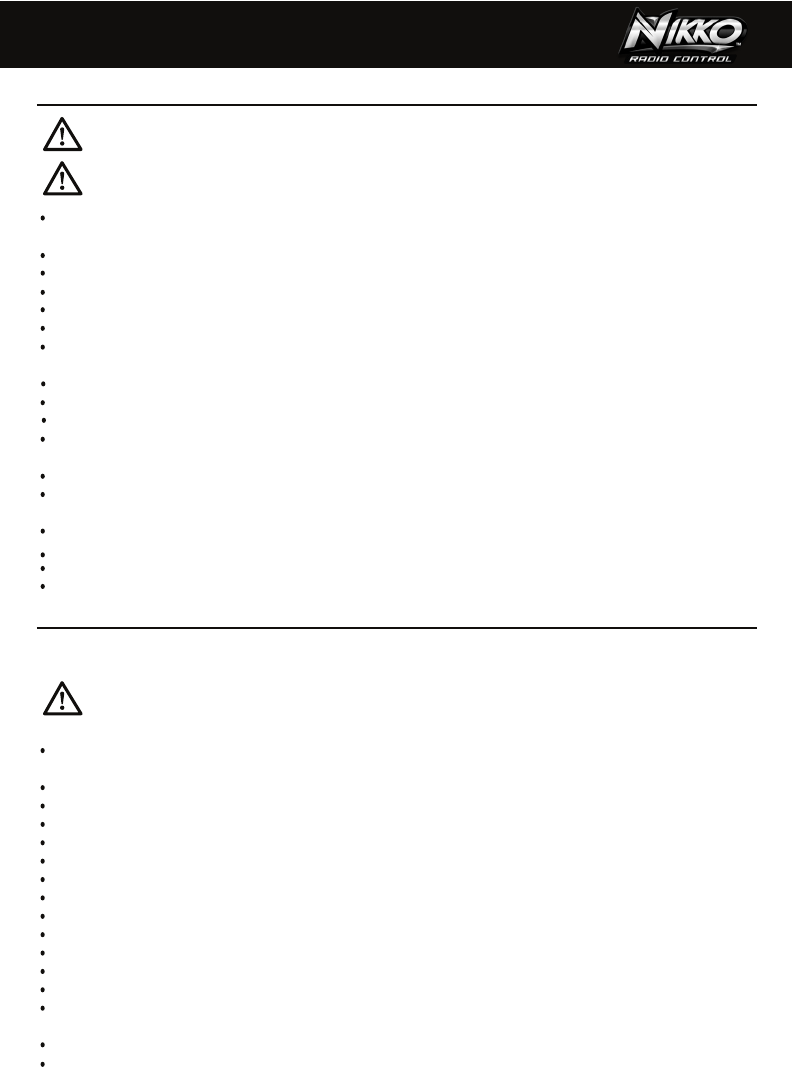
This product and its accessorries are not suitable for children under the age of 36 months, because of small
parts that can be swallowed.
Intended for children age 8 and older.
Adult supervision strongly recommended.
Drive your vehicle in a safe area away from people, pets, cars, etc.
Do not drive on streets or after dark.
Do not touch or try to pick up the vehicle when it is in motion. Wait until it has stopped completely.
Keep hair, fingers, face and loose clothing away from front and rear wheels while the vehicle is switched on or
while the transmitter is operating.
Do not drive the vehicle toward walls or other hard objects.
Be a responsible operator!
Do not drop or give impact to the product and its accessories.
Check if a near transmitter produces interference or signals with the same frequency. In such a case, move to
another location or try again after a while.
Never attempt to disassemble or modify the product or its accessories.
Regularly inspect the antennas for cracks or breaks. Do not bend the transmitter antenna. Do not use the
transmitter if the antenna is broken.
The vehicle wire antenna is fragile. Never pull or tug on the antenna, as it may loosen or detach from the vehicle.
Use extra caution when playing near water or ice.
Intended to be used on land and in water.
Do not use the product in salt water or water with strong currents.
WARNING! CHOKING HAZARD
Small parts. Not for Children under 3 years.
Only operate the product and its accessories when fully
assembled and in accordance with this manual!
CAUTION
BATTERIES AND CHARGER
1
Make sure the batteries are inserted with correct polarity and follow the toy and battery manufacturer's
instructions.
Use only battery type(s) recommended.
Do not attempt to short-circuit, charge, disassemble or heat batteries.
Do not dispose of batteries in fire or make them wet.
Do not mix or use new and old batteries together.
Do not mix or use different types of batteries together.
Non-rechargeable batteries are not to be recharged because of the danger of eruption.
Remove rechargeable batteries from the product before charging.
Recharge batteries only under adult supervision and follow the battery and charger manufacturer's instructions.
Only children of age 8+ are allowed to use the charger and only if used under adult supervision.
Battery replacement should be done in presence of an adult.
Never pull a battery pack out of the vehicle by the wire of the plug.
Remove batteries from the product for storage. Battery may be hot.
After use, be sure to turn the switch off. Failure to do so may adversely affect batteries, resulting in disabled
charged.
Remove weak or exhausted batteries from the product.
Dispose batteries safely and properly, according to your local requirements.
I
ncluded: 6.0V Rechargeable NiMH Battery Pack and Battery Charger for NiMH Battery Pack and
AAA/LR03 battery x3.
IMPORTANT BATTERY SAFETY INFORMATION
CAUTION: TO AVOID BATTERY LEAKAGE (AAA/LR03 and the 6.0V NiMH RECHARGEABLE
BATTERY PACK):
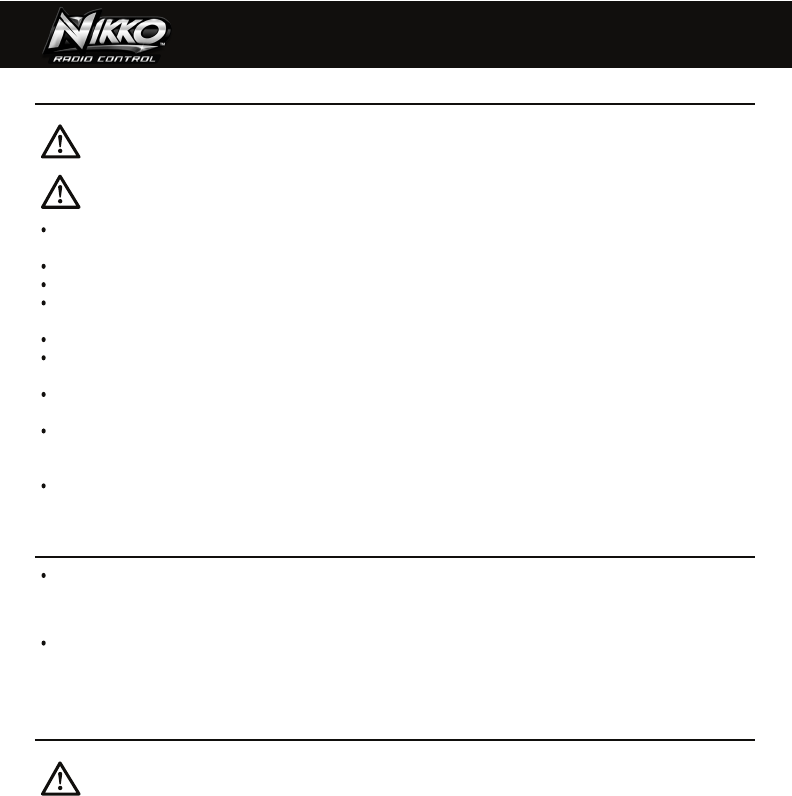
BATTERY CHARGING AND CARE
RUNNING AND CHARGING TIME
BATTERY CHARGING INSTRUCTIONS
2
Regularly examine charger and battery pack for leaking, corrosion, damage, including plugs, casings and all
other parts. If damaged, do not use.
Do not short-circuit the charger.
Do not charge batteries with a charger other than the included one.
Do not charge batteries other than the included NiMH battery pack with the charger and do not use the charger
as the power source for other equipment.
Do not charge batteries in a place within the reach of small children.
Do not short-circuit battery terminals, otherwise the battery may swell and get hot, leading to a dangerous
situation.
Do not use, store or charge batteries in a place near a heater or in high temperature or in humid or damp
situations.
Vehicle will not run without a 6.0V rechargeable NiMH battery pack and matching charger, commonly available
for R/C vehicles at many toy and hobby dealers. Always follow the instructions that come with your battery
pack and charger.
Toy must only be used with recommended transformer/ charger.
NOTE: NICKEL-METAL HYDRIDE BATTERIES MUST BE RECYCLED OR DISPOSED
PROPERLY.
Contact your local area office of solid waste management or other
appropriate local agency for information.
NOTE: "
CONDITION" BATTERY PACK FOR BEST RESULTS BY CHARGING ACCORDING TO THESE
INSTRUCTIONS ON EVERY CHARGE. ON THE FIRST CHARGE, EXPECT A SHORTER RUN TIME.
RUN TIMES WILL INCREASE OVER THE NEXT 6 CHARGES.
WARNING: The transformer/ charger is not a toy.
NiMH battery packs are not like alkaline batteries. They lose all their power suddenly, not gradually, and the
vehicle will stop very soon after slowing down becomes noticeable, with little warning. This is normal, but keep
it in mind, since you need to get the vehicle back before the battery power runs out.
Battery pack running times depend on the conditions you operate in. Running time may vary over the life of the
battery pack, with the first few charge cycles yielding shorter run times than later charges.
Drain Down-Cool Down-Charge Up
After the first charge, for best performance always run the battery pack fully empty before recharging. Run
until vehicle wheels/rotors/propellers/motors slow to stop.
Allow the battery pack to cool before recharging.
Battery Pack Heat
Battery pack gets hot after use! This is normal, but be careful. Wait until battery pack is cool (20 minutes or
more if needed) before charging. Charging battery packs when they are hot will severely reduce the number of
times they can be recharged.
After charging, battery pack will be warm. This is normal.
1.
1.
2.
2.

SAFETY CIRCUIT
RECHARGING INSTRUCTIONS
3
During use, the internal power in the electric circuit can get quite high (for example during a 360 spin).
In such a case a safety circuit will shut down the vehicle for approximately 10-15 seconds. During this period the car
will not respond to signals from the transmitter. This is not a defect but a safety measure to protect the electronic
circuits. After this period, the car will resume normal operation.
Do not drive your vehicle on streets or in a crowded place.
When the battery pack gets wet, dry completely before storing it.
Do not store the vehicle in a place near a heater or where temperature rises. After use, remove the batteries
from the transmitter and vehicle to store.
This vehicle can run on land and in water but it is not fully water-proof! Immersing it into water may lead to a
malfunction. Dry vehicle well after operating in water.
Adult supervision is strongly recommended when playing near water. Do not drive your vehicle in the sea and
wavy water surface, or where a rapid current flows. Stay away from areas where waves rise due to a strong
wind. Also avoid driving on dirty water surface or where waterweed grows dense, this can cause a malfunction.
Operate your vehicle in water with due care to the distance and battery life, since you need to get the vehicle
back before the battery power runs out.
Plug the battery pack charger into a standard household outlet.
Connect the battery pack to the charger as show in page 5.
Red light on the charger to show that the charger is operating. Normal charging time is 60-80 minutes.
Red light will blink continuously when the battery pack is fully charged.
Unplug the charger from the standard household outlet after 60-80 minutes of charging.
After charging, the battery pack will feel warm, this is normal.
1.
2.
3.
4.
5.
6.
NIMH RECHARGEABLE BATTERY PACK TIPS
CAUTION DURING PLAYING WITH VEHICLE
Don't overcharge the battery pack, unplug the charger from the household outlet at the end of the
recommended charging time (Approximately 60-80 minutes).
Store your battery pack discharged.
Your battery pack will hold a charge for a shorter time in hot weather.
The charging time is 60-80 minutes. Make sure the charging time will not belonger or shorter then the
advised charging time as that will effect the quality of the battery.
When the use time of this battery pack becomes shorter and shorter, it is most likely time to replace the
battery pack.
If driving time becomes shorter or wheels do not turn with full power, the capacity of the 1.5V battery or 6.0V
battery pack are insufficient. This is the sign indicating that you need to replace the 1.5V battery or recharge
the 6.0V battery pack.
Be sure to recharge the battery pack before driving it. If you do not play with the vehicle immediately after
recharging, the charge is drained and the vehicle cannot drive.
When the battery temperature gets too high, the circuit shuts off automatically to protect the receiver circuit
and the battery in the vehicle. In such a case, wait until the battery cools down before recharging or playing
with the vehicle.
If the rechargeable battery is repeatedly charged without being sufficiently discharged first, the capacity will
gradually decrease (memory effect of battery). This is a characteristic of rechargeable batteries. Be sure to
start recharging after operating the vehicle until they nearly stop.
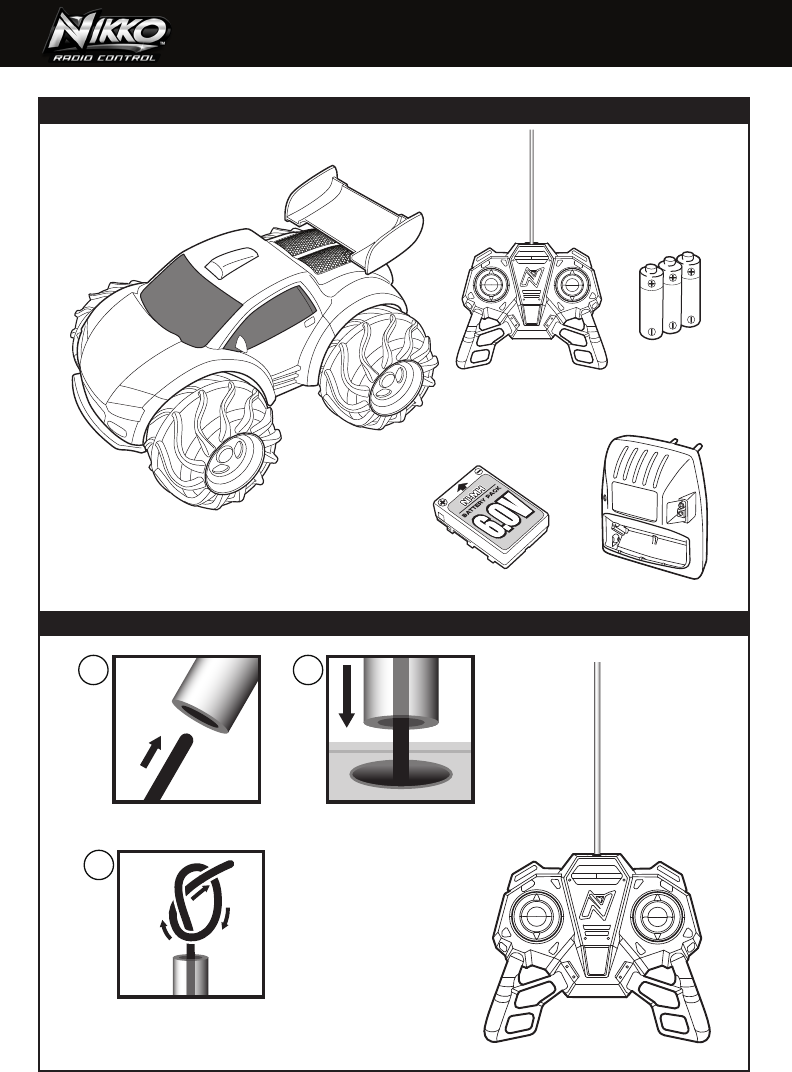
1 2
3
6.0V NiMH battery pack
CONTENTS & FEATURES
4
VaporizR 2
Transmitter
NiMH Battery charger
1.5V (AAA/LR03)
battery x3
ANTENNA ASSEMBLY
Insert antenna wire
from product into tube.
Slide tube down
antenna wire and into
hole in product.
Tie knot with any
remaining antenna wire
(Do not pull wire tight).
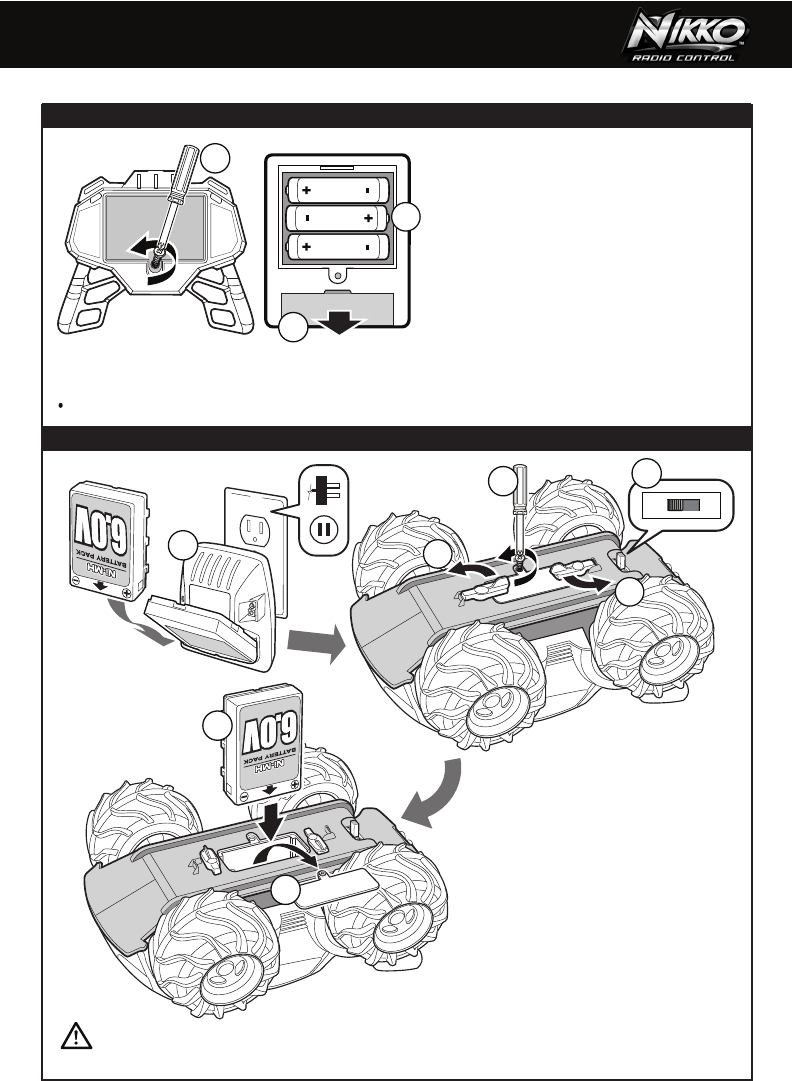
1.5V
1.5V
1.5V
3
3
2
ONOFF
4
6
1
2
3
5
1
TRANSMITTER BATTERY INSTALLATION
VEHICLE BATTERY INSTALLATION
5
1.
2.
3.
To remove battery lid, loosen screw to open.
Slide open the battery lid in the direction as
shown in the figure, while lightly pressing its
center.
Insert 1.5V (AAA/LR03) batteres x3 with the
polarity (+/-) as shown on the bottom of
battery compartment.
Replace the battery lid, following the removal
procedure in reverse.
There is no on/off switch on the Transmitter. Moving the sticks turns it on automatically.
Fully charge 6.0V NiMH battery
pack in advance of your use.
Turning off vehicle.
Turn the latches located underneath
of vehicle to unlock battery lid as
shown in the figure with arrows.
Loosen screw to open battery lid.
Remove battery lid.
Insert 6.0V battery pack into battery
compartment with correct polarity
(+/-). Place battery lid back in
position and lock properly
1.
2.
3.
4.
5.
6.
NOTE:
For best performance, always use alkaline batteries only. To remove the batteries, reverse the
installation procedure.
THIS PRODUCT SHOULD BE USED WITH ADULT SUPERVISION.
NOTE:
To remove the batteries, reverse the installation procedure.
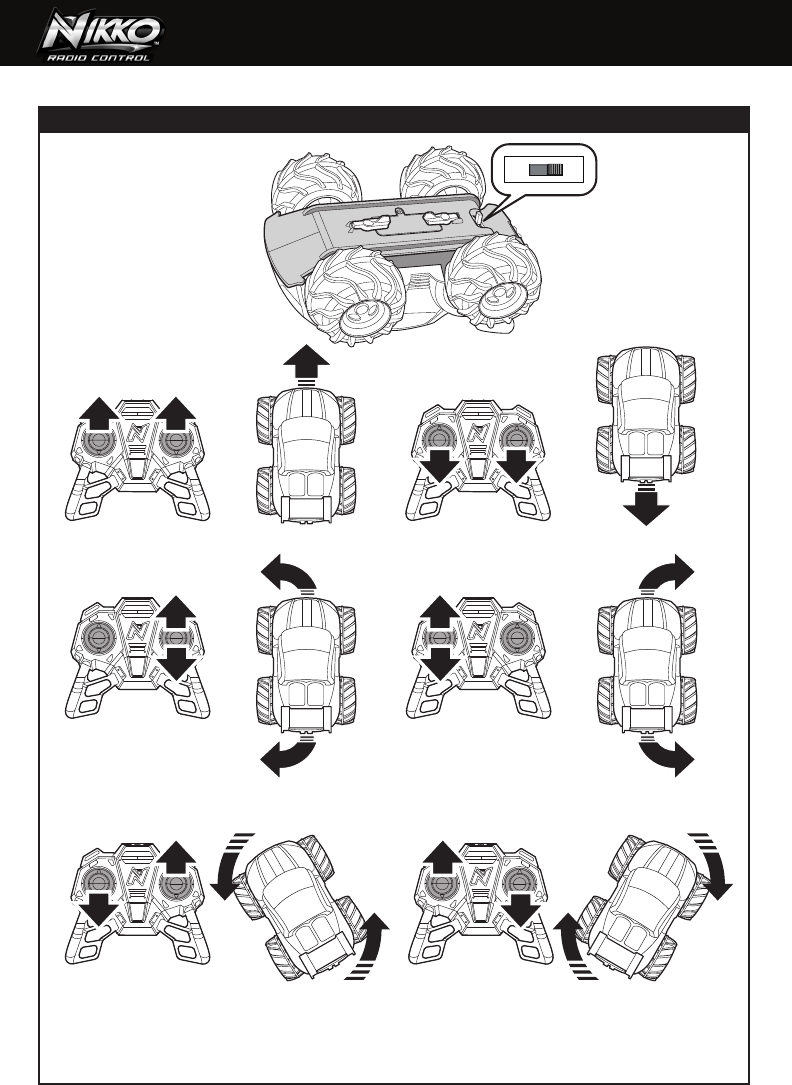
ONOFF
OPERATING R/C VEHICLE
6
TURN VEHICLE
POWER ON.
FORWARD
(Push both sticks forward)
BACKWARDS
(Pull both sticks backwards)
LEFT TURN
(FORWARD) (Push right stick forward)
RIGHT TURN
(BACKWARDS) (Pull right stick backwards)
RIGHT TURN
(FORWARD) (Push left stick forward)
LEFT TURN
(BACKWARDS) (Pull left stick backwards)
LEFT SPIN
(At the same time, pull left stick back
and push right stick forward)
RIGHT SPIN
(At the same time, pull right stick back
and push left stick forward)
NOTE:
After play, always turn vehicle off. Remove batteries from controller and R/C vehicle when not in
use or when storing. Leakage may occur and cause damage if left for a long period of time.
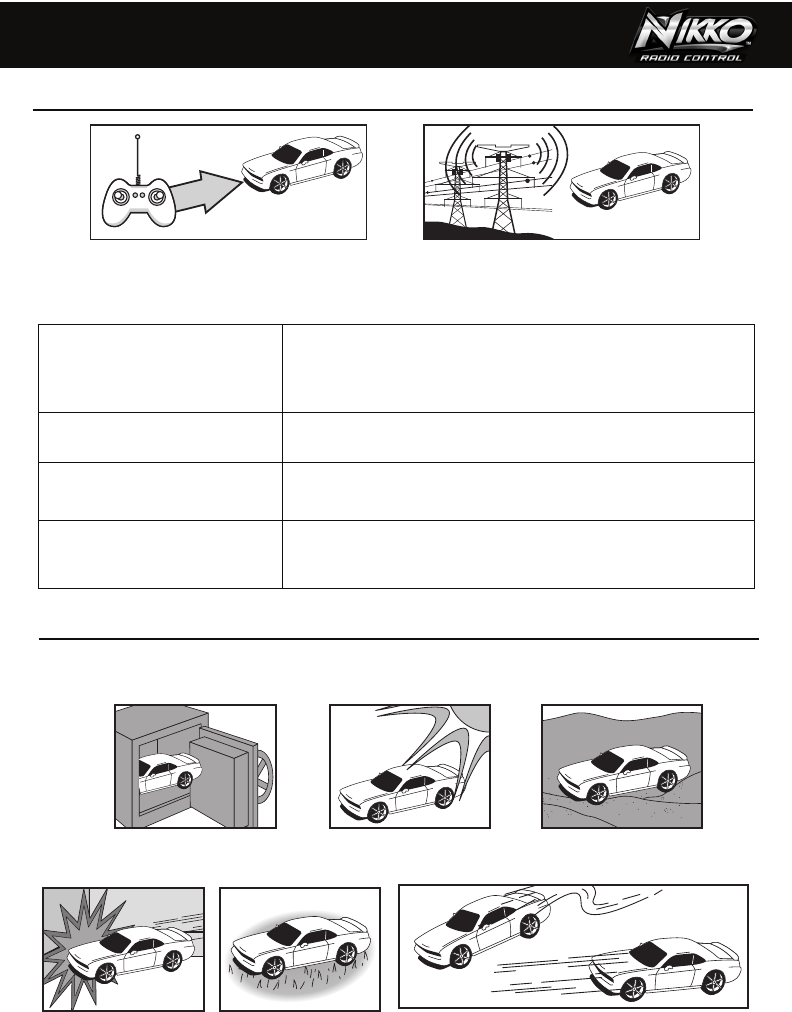
Radio waves control the R/C vehicle. Care for your vehicle and it will provide hours of fun!
Avoid heat, sand and high impact crashes!
TROUBLESHOOTING AND CARE FOR R/C VEHICLE
TREAT YOUR R/C VEHICLE WELL
R/C VEHICLE
• Are the + and – contacts correctly matched in the controller?
• Are the metal contact tabs touching, rusty or dirty in controller?
• Are there batteries in the vehicle and controller?
• Is the power switch turned to play?
• Are the batteries weak or out of power?
R/C VEHICLE
MOVES BY ITSELF
• There is radio interference in the area.
• Another R/C vehicle with the same frequency is close by.
R/C VEHICLE
RUNS SLOWLY
• There is radio interference in the area.
• Another R/C vehicle with the same frequency is close by.
• Are the batteries weak or out of power?
PERFORMANCE DROP,
INCONSISTENT MOVEMENT
Check batteries. If necessary, recharge battery pack and/or replace the
batteries in the R/C vehicle and controller with new alkaline batteries.
7
DOES NOT MOVE
OR FAILS TO RUN
INTERFERENCE
Other radio signals may cause loss of control.
Remove vehicle from an area of interference.
LIMITED RADIO CONTROL RANGE
While R/C vehicle may be visible at a distance, full
operational control may be lost. Hold controller
high in the air and direct vehicle back.
Store in safe place. No direct sunlight. No sand or dust.
No Collisions. R/C vehicle may get stuck
on carpet or grass.
Avoid running 2 vehicles with the same radio control
frequencies.
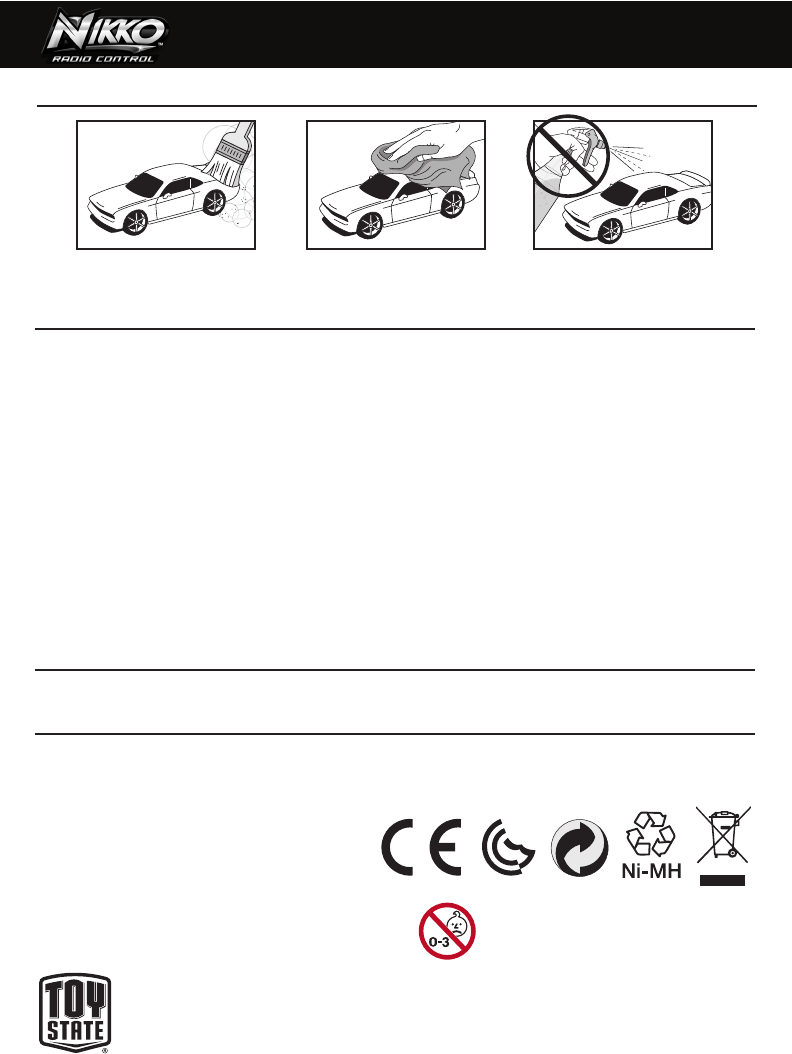
NOTE:
This device complies with Part 15 of the FCC Rules. Operation is subject to the following two conditions:
(1) this device may not cause harmful interference, and
(2) this device must accept any interference received, including interference that may cause undesired operation.
authority to operate the equipment. NOTE: This equipment has been tested and found to comply with the limits for a Class B digital
device, pursuant to Part 15 of the FCC Rules. These limits are designed to provide reasonable protection against harmful interference
in a residential installation. This equipment generates, uses and can radiate radio frequency energy and, if not installed and used
in accordance with the instructions, may cause harmful interference to radio communications. However, there is no guarantee
that interference will not occur in a particular installation. If this equipment does cause harmful interference to radio or television
one or more of the following measures:
- Reorient or relocate the receiving antenna.
- Increase the separation between the equipment and receiver.
- Consult the dealer or an experienced radio/TV technician for help.
FEDERAL COMMUNICATIONS COMMISSION COMPLIANCE
This toy and all accessories need to be periodically examined for potential hazards and any
potentially hazardous parts be repaired or replaced.
MANUFACTURER’S NOTE
ATTENTION PARENTS
For questions, e-mail our Consumer Service Dept.at
consumerservice@toystate.com
Or Call 1-877-473-8015
www.toystate.com
www.NikkoRC.com
MADE IN SHENZHEN, CHINA
TOY STATE INTERNATIONAL LIMITED
66 MODY ROAD, KOWLOON, HONG KONG
IN THE INTEREST OF BETTER QUALITY AND VALUE, WE ARE CONSTANTLY IMPROVING AND UPDATING OUR PRODUCTS.
CONSEQUENTLY, PICTURES IN THIS INSTRUCTION
SHEET MAY SOMETIMES DIFFER FROM THE MODEL ENCLOSED.
WARNING:
Not suitable for children under 36 months due to
small parts. Choking hazard.
CLEANING AND MAINTAINING
Warning: Changes or modifications to this unit not expressly approved by the party responsible for compliance could void the userʼs
reception, which can be determined by turning the equipment off and on, the user is encouraged to try to correct the interference by
- Connect the equipment into an outlet on a circuit different from that to which the receiver is connected.
“Modifications not authorized by the manufacturer may void users authority to operate the device.”
8
Brush areas where dirt and
dust get trapped.
Wipe body off with a soft rag
or tact cloth.
Do not clean vehicle with
chemicals.

9
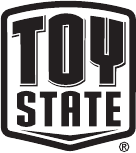
www.toystate.com